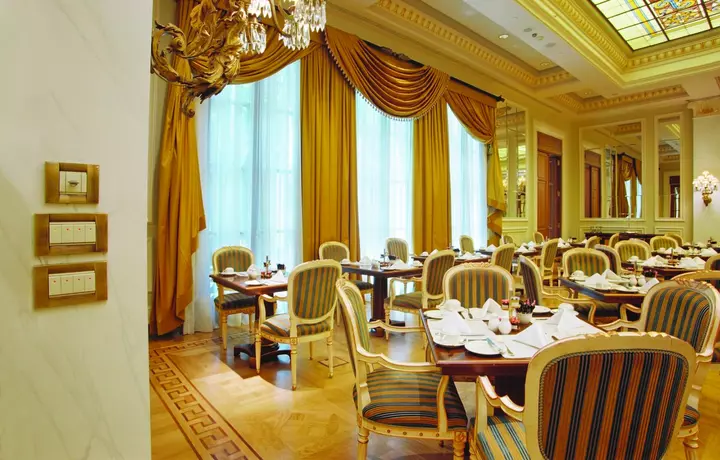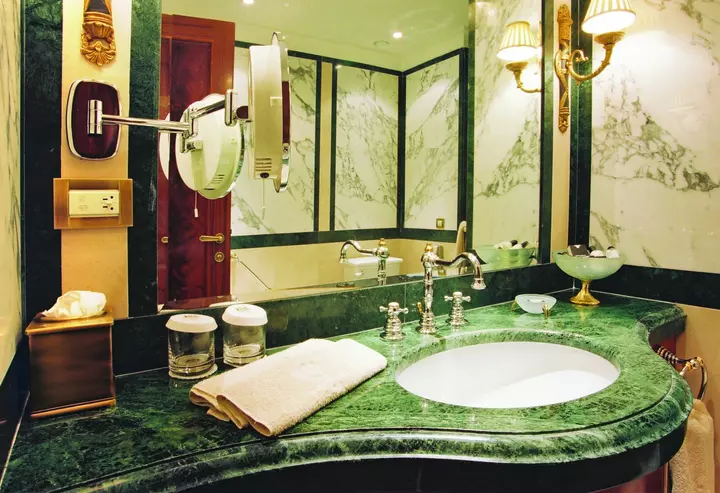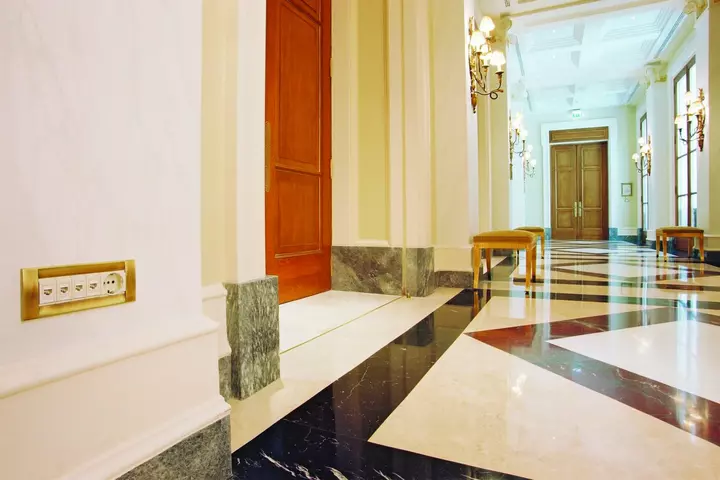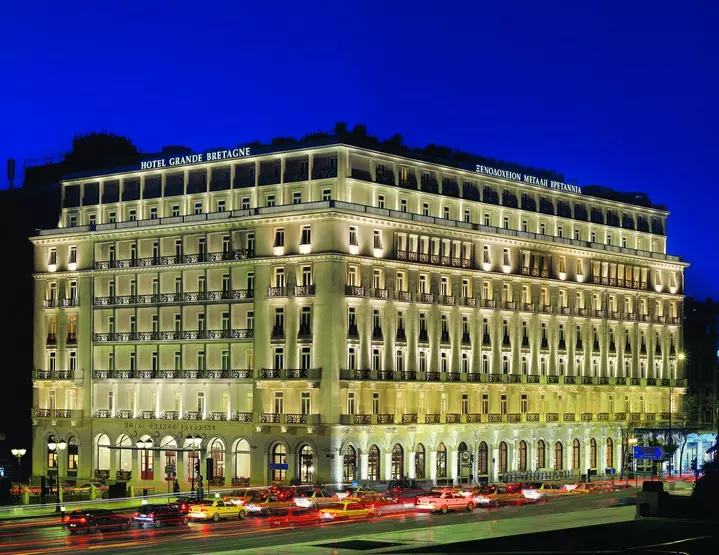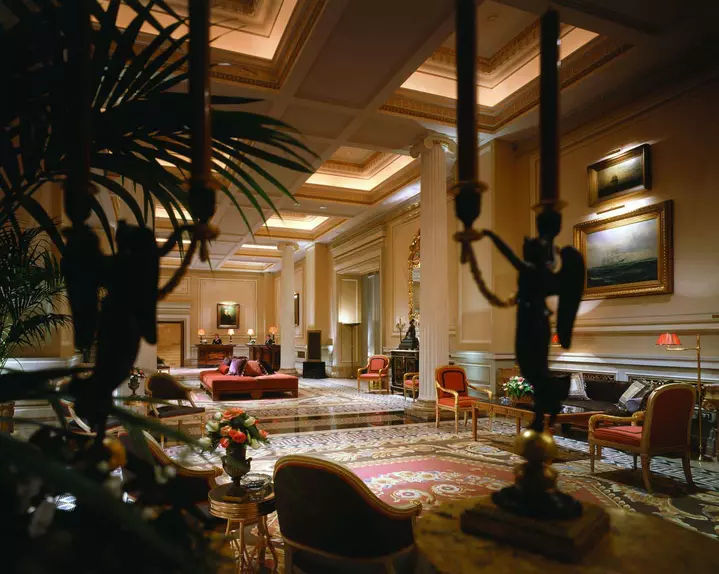Grande Bretagne, Athens
Grande Bretagne
The most prestigious hotel in Athens, right downtown in front of the Parliament building, which housed VIPs and athletes during the first Olympic Games in 1896, is preparing for the upcoming 2004 Olympics with a complete renovation. The renovation involved an overall makeover of the rooms, creating more spacious lobby areas, a new health center and two swimming pools: in the end, the city has a new five-star jewel.
The building was originally a prestigious residential structure. The construction dates from 1842 when Dimitriou, a Greek merchant established in Trieste, decided to build his family residence here. He hired the Danish architect Teofilo Hansen for the job, whose drawings influenced the aesthetics of many of the city's other nineteenth- century buildings. Teofilo Hansen, together with his brother Christian, was one of the protagonists of the monumental Neoclassicist movement: in addition to Athens, he worked primarily in Vienna, capital of the Habsburg system, where he built the Parliament building, oversaw the urban planning of the Karlsplatz area, designed the headquarters of the national Museum and three churches, including the Greek Orthodox. The Dimitriou house was conceived as a statement of wealth and status symbol for one of the city's most well-to-do families.
A few years after it was built, the house went to the Clados family, then later became the French Architectural School. In 1874 it was purchased by Savas Kendros, who partnered in 1878 with Stathis Lampsas, and converted the building into a hotel under its current name. The hotel offered 40 rooms with two WC, and water supplied in buckets brought in by the staff. In 1888, after the death of Savas Kendros, the management was taken over by his partner Stathis Lampsas, whose skill and initiative made him a model hotel entrepreneur.
In 1896 the hotel became famous by hosting the foreign athletes and the Olympic Committee of the first modern Olympic Games. Having outgrown its facilities due to the increase in guests, a new floor was added to the existing four in 1930; it holds the historic party room (Salle des Fetes), the work of the Swiss architect Emil Vogt.
The Hotel Grande Bretagne was the first building in Greece, if not in Europe, to be equipped with central air
conditioning. This is where all Greek guests of State habitually lodge: politicians, artists, famous businessmen. Just before the second world war the basement became the central command of the army, since the ceiling consisted of 80 cm of reinforced concrete and had a tunnel connecting the hotel to parliament (closed today due to work on the subway). During the second world war it was the German command central, and later of the English. After the liberation it was visited by Winston Churchill, who suffered a dynamite attack.
In 1966 two floors were added facing Via Panepistimiou. They were renovated in 1974, giving the Hotel Grande Bretagne its current appearance.
The hotel was closed in December 2001, and reopened 15 months later with radical alterations to both its structures (foundations, statics, etc.) and in its systems and appearance.
The number of rooms was reduced from 364 to 327. Of these 290 are standard with bathtub and shower hose, 35 suites, 24 of which include steam bath, a Royal suite on the fifth floor measuring 400 m2 and a 200 m2 presidential suite on the fourth floor. The Royal suite includes, in addition to a large foyer, two bedrooms, two bathrooms, guest and staff WC, kitchen, guest and staff coat closet, master bedroom that communicates with the library-office, guest rooms, etc. fully justifying its 400 m2.
Reproductions of all of the lithographs by Teofilo Hansen are on display in the common areas, also used as decorations by Emil Vogt and mostly destroyed during the first restoration. The floors are all made of marble from Greece, Italy and France, while the mosaic in the lobby is from Turkey. Natural light is filtered through glass processed with the vitrò; technique, and heavy velvet drapes separate the various sections of the lobby. Crystal chandeliers, antique furniture and indoor plants complete the decorations.
For such a special hotel, Vimar created a special Idea cover plate in antiqued bronze colored metal, which blends with the color scheme defined by the architects. A total of 6,540 antiqued bronze cover plates were used for three-, four- and six-module round boxes, and 1,000 ivory cover plates. A total of 14,610 Idea white equipment units were also used. For Vimar this was the first project in Greece to apply the EIB-Bus system in the hotel industry, used to control the lighting in the halls, restaurants and lobby, using 100 16914.B modules.The electrical engineers were almost fanatical in their attention to positioning the lighting points.
Published on
